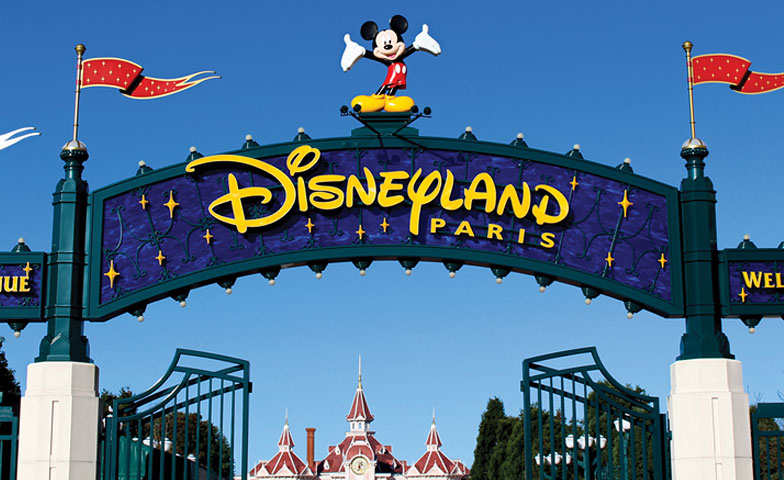Implementing Disney principles in middle schools.
From theme parks to movies, the Walt Disney Company is world-renowned for the high caliber of its customer experience. And, while many perceive how well they do what they do to be Disney “magic,” it’s not magic at all! Rather it is the result of two things: (1) Intentional, focused leadership, and (2) Systems architected to produce consistently positive experiences that take root in both your mind and heart. Having studied how Disney “does Disney,” I’d like to highlight two distinct, yet related, insights relevant to architecting high-quality middle level education: The Importance of Values and Vision and The Art of Storytelling.
Values and Vision
At its core, Disney is more than a theme park, company, or brand. Rather, Disney is a promise. It promises the highest levels of entertainment, quality experience, and attention to detail. While many companies promise similar marks of excellence, the reason that Disney is so successful is that it fulfills this promise on a regular basis, day-in and day-out.
How does Disney consistently deliver such high level experiences? It does so by having a clearly defined set of values and visions that both guide and focus its decision-making.
Disney defines values as the central and unchanging reason for being; they are the North Star that allows one to chart every decision. Having values centers decision-making and allows for taking appropriately aligned risks. Because values are timeless, they must be vigorously protected from both external threat and insidious internal decay.
For example, in our school, we decided that “Our Core Values” (the reason our school exists) are to provide a safe, happy, and healthy learning environment. When we investigate a new idea, program, speaker, or assembly, we ask: “Does it make us a safer, happier, and healthier learning environment?” Using your values as a guide to explore innovation helps streamline operations and remain focused during the decision-making process.
Vision is how you operationalize your values in today’s political, social, and financial realities. Vision requires forethought and conversation as well as planning and preparation to ensure that today’s activities are aligned to and fully support your timeless values.
At the start of each academic year, we have the chance to reconvene, collaborate, and envision ways we might better align our practices with our values. During this process each spring, I meet with the building leadership team to discuss ways we might become a safer, happier, and healthier learning environment during the upcoming year.
For example, we have witnessed significant changes and challenges concerning the issue of safety over the past years. From cyberbullying to intruder threats, the timeless value of safety means something drastically new in today’s reality. We discussed ways to keep students safe, and we considered a range of topics that included building access procedures and the curriculum. We needed to make changes to our vision of what it means to be safe in today’s world to better align with our core value of safety.
The Art of Storytelling
From our youngest days, listening to stories is how we learned about the world, others, and ourselves. From fairy tales to nursery rhymes, stories are among our first teachers because good stories are great teachers. The reverse is true as well: great teachers are good storytellers because they have the ability to tell a story that captures a student’s attention, heart, and imagination. Good stories told by great storytellers encourage you to wonder, consider multiple perspectives, and ask questions.
For Disney—and for us—great storytelling provides a valuable entity: engagement. If you can “hook” students, families, and a community with the story of your school, class, or lesson, they are captured by it and, in turn, want to become a part of telling and living that story.
The Walt Disney Company is in the business of storytelling, but how does it consistently tell great stories that become classics and engage millions of people? It accomplishes this by paying attention.
Disney has realized that every decision and every detail, no matter how small, tells a part of the story. They pay attention to every detail of every decision they make. They realize that people are continually watching, listening, and looking for cues about what is important, what is acceptable, and what is valued.
Think of the attention to detail, to cleanliness, and to customer service that is found in a Disney park. For the guests of Disney, cleanliness and customer service tell a story: you are valuable and important, and we are glad you are here!
What story are you telling? If a stranger were to walk into your classroom and look around, what would they learn about you and the students? How is the room arranged? What kinds of furniture are in the room? What is displayed on the walls? How is the seating arranged? Where do you situate yourself while teaching? By noticing these things, the stranger would likely be able to tell a lot about how you view yourself and your students. This is because each of these decisions tells a story.
If good education is good storytelling, then it is important that we look at the story we tell each and every day. Does the story you are telling align with your values and vision?
Disney has learned that telling a powerful story is the key to building engagement. By using clearly defined values and a relevant vision as the engine to drive your story, your words and actions remain aligned to your goals.
By focusing on the two core ideals of values and vision, your school can become a truly magical place as well!
